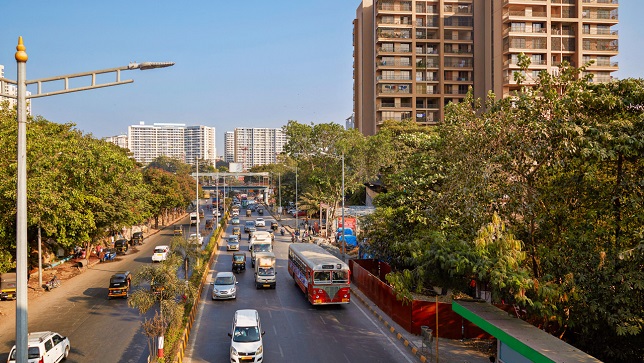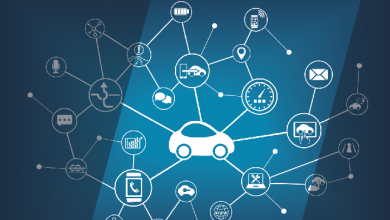Five trends for location intelligence in India that are shaping 2023

India’s economy is demonstrating resilience despite global headwinds slowing growth. Across the world, consumer optimism about economy recovery is one of the highest in India, where activities such as shopping, entertainment, travel, and social gathering are returning to pre-pandemic levels.
As the Indian economy continues to recover, global challenges will mark their impact on the automotive and logistics industries, and location technology will play a key role as a driver of change. Let’s have a look at five trends that will play up the importance of location intelligence in India in the coming year.
More initiatives to transform India through geospatial knowledge and infrastructure
Over the years, there has been increasing focus to establish a quality geospatial ecosystem in India. From the democratisation of Indian geospatial ecosystem to the launch of the National Logistics Policy, these moves by the government seek to spur domestic innovation and increase competitiveness of local products. This enables Indian companies to compete in the global mapping ecosystem and realise the dream of ‘Atmanirbhar Bharat’ or Self-sufficient India, and power the Make in India initiative.
According to the union minister of state for Science and Technology Jitendra Singh, India’s geospatial economy is expected to cross USD $7.7B by 2025, growing at a rate of 12.8%. More Indian IT companies are also starting to see the value of location-powered solutions and data, further encouraging the government to strengthen its policies that will help build global unicorns in India.
In 2023, we are likely to see continued government initiatives and involvement when it comes to geospatial data. While this encourages homegrown businesses to develop their own mapping systems, it also creates the opportunity for foreign mapping firms to work in tandem with Indian entities in the geospatial sector to build state of the art solutions for Indian citizens. As such, for India to truly be a leading geospatial and mapping economy globally, the National Geospatial Policy must establish fair and equal market practices to ensure continued investments and innovations by both Indian and foreign players.
A bigger developer community in India
With 5.8 million developers in India, the country has undoubtedly the largest developer pool in the world; this figure is expected to hit 10 million by 2023. As a result of favourable government policies, India’s startup and developer communities are being empowered to develop location-based software and applications that offer data analytics and services that directly impact innovation.
Start-ups like Transo, LocTruth, Transerve, RoadCast, and Intents Mobi among many others are partnering with HERE Technologies to enrich their applications and solutions with HERE Map data and location services, addressing multiple business challenges for organisations in India and across the world. Some of these location empowered solutions include supply chain, geo-analytics, fleet management, emergency management, market insights, mobility & transportation and smart city solutions.
We can expect more Indian startups to leverage location intelligence technologies in the coming year, as well as partner with larger geospatial companies to further prove the success of ‘Make In India’.
A boom in software-defined vehicles and connected user experience
According to Deloitte, “Software-defined vehicles” refers to the state in which the quantity and value of software in a vehicle exceeds that of the mechanical hardware. It also reflects the gradual transformation of automobiles from highly electromechanical machines to intelligent, expandable mobile electronic devices that can be continuously upgraded.
The reason for this transformation is because software-defined vehicles enable automotive original equipment manufacturers (OEMs) to easily scale – building apps for the vehicles that can be rolled out over the air in new and older models, upgrading processes and reducing dealership visits. This means that customers will be able to receive wireless improvement updates for security functions, new infotainment system functions and more. During this process, software-defined vehicles will also facilitate the collection of key data by automotive OEMs to gain continuous insight into every aspect of both the vehicle’s operation and its performance.
As the demand for more intelligent and safer driving solutions continues to grow, connected technology is also increasingly taking centre stage in the Indian automobile market. The demand for connected technology is bringing rapid transformation – including the boom in software-defined vehicles – and connected cars will no longer remain a luxury but a necessity in India. In fact, India’s connected car market is expected to grow by over 20% in the next few years, with the availability of connected services ranging from 20% to 70%, across different categories of OEMs.
Increase in electric vehicle usage across industries
In India, data from the Federation of Automobile Dealers Association of India has shown that retail electric vehicle (EV) sales have gone up nearly 185% year-on-year in October 2022. This is attributed to the rise in fuel prices, entry of new manufacturers, development and enhancement of tech-related EVs, subsidies from central government, and more.
For the same reasons, including growing concerns around vehicle emissions, consumers are increasingly attracted to electric two-wheelers (E2W) due to their lower environmental impact, and the fact that 2Ws provide an easier way to navigate India’s congested roads; by far, 2Ws are India’s dominant mode of transportation – including to fulfil last-mile deliveries in the country as e-commerce usage rates rise.
On the other hand, trucks are the backbone of the Indian logistics industry, but they also contribute significantly to pollution. While trucks comprise only about 2% of on-road vehicles in India, they are responsible for about 40% of emissions and fuel consumption from road transport.
There is currently a lack of financial incentive for businesses in India to tap into electric truck usage. As India’s EV market continues to expand, technology and software will play a huge role in the EV ecosystem, bringing about better EV experiences that come with enhanced safety and connected features – all of which should encourage the move towards electric trucks. Policies and regulations by governments pushing for smart and sustainable cities will also have a strong influence on the development and adoption of EVs across industries.
Visibility is the holy grail of logistics
The Indian supply chain network is vast and complex and still relies on traditional supply chain methods. However, the pandemic and the rise in e-commerce have prompted the industry to embrace technology so as to remain competitive and resilient, thus better serving consumer demands.
For instance, businesses are now demanding real-time updates, end-to-end supply chain visibility, warehouse automation and asset management to create a holistic network. There is now a better understanding among companies that full supply chain visibility is necessary for operational resilience.
As an economy booster, the Government of India launched the National Logistics Policy in 2022 with the aim to reduce logistics cost from 13-14% of India’s gross domestic product (GDP) to a single-digit figure in the next five years. This policy sets the roadmap for India to reduce logistics costs via digitisation, standardisation, new digital systems, infrastructure development and improving existing logistics operations.
For the Indian supply chain ecosystem to take flight, a solid supply chain infrastructure foundation coupled with strong technology that connects data together to enhance visibility is key. While government is building a Unified Logistics Interface Platform (ULIP), its successful use by the supply chain industry will depend on the availability of quality location data and services from multiple service providers and sources. This is going to be extremely valuable in creating a sustainable supply chain and logistics ecosystem in India in 2023 and the years to come.
Authors:

Harpreet Singh
Director and Head of Partner Business for India
HERE Technologies
Equipped with 25+ years of experience in the tech industry, he is currently responsible for overseeing partner business in India for HERE Technologies, including growing existing relationships with key strategic partners in the region, and working on initiatives to onboard new India-based partners for global business opportunities.

Animesh Sahay
Head of Customers for India and South Asia
HERE Technologies
Having been in the technology industry for more than 24 years, Animesh has extensive knowledge and experience across broad sectors and verticals. He heads all the customer businesses at HERE across region and is responsible for driving sustainable business in various domains, markets and geographies.
Published in Telematics Wire


